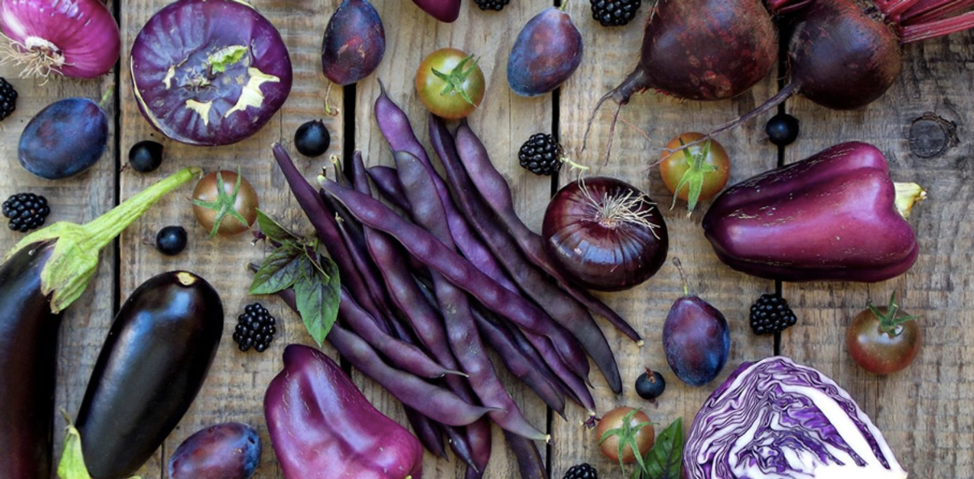For the most part, we tend to associate certain foods based off of their colors: when we think of something green, we might think of broccoli; when we think of something orange, we might think of an orange; when we think of something red, we might think of raspberries.
What about purple foods? I’m not talking about standard foods that have the royal color as their default shade (eggplants, grapes, blackberries); I’d like to shine a light on foods that have their own separate purple version. For example, did you know that you could find purple artichokes, carrots, potatoes, asparagus, peppers, tomatoes, and cauliflower? Unlike food coloring, this natural shading offers multiple health benefits. According to the Pantone Color Institute – the global authority on color trends – an ultraviolet hue in foods indicates nutrient density and antioxidants (Schueller).

Purple cauliflower – only slightly less boring than regular cauliflower.
The shade of purple within foods comes from anthocyanins – disease-fighting antioxidants. Anthocyanins are responsible for producing colors in red, blue, and violet foods, depending on the count of anthocyanins there are. For example, a black raspberry has nearly five times as many anthocyanins than a cherry. Artistically, this makes sense since blue and red combination of black raspberries outweigh the singular red hue of cherries.
So what do anthocyanins do? Because it boasts antioxidants, it prevents the creation of free radicals which would normally damage cells. In short, the more purple foods you eat, the less likely you will gain cancer. As a result, the American Cancer Society recommends eating as many anthocyanin-containing foods as possible (AFP).
So if you’re looking to spruce up your diet and colorize your dishes, look no further than anthocyanin-based fruits and vegetables. For a list of violet alternatives of your staple foods, take a look at our compilation below (Cole). Remember: expanding your purple palette can be just as delicious as it is life-saving!
Fruits:
- Grapes
- Figs
- Passion Fruit
- Raisins
- Plums
- Prunes
- Blackberries
- Blueberries
- Currants
Vegetables:
- Red Cabbage
- Cauliflower
- Asparagus
- Carrots
- Corn
- Potatoes
- Peppers
- Basil
- Broccoli
- Thyme
- Red Leaf Lettuce
- Kale
- Artichokes
- Red Onions
Sources:
Schueller, Gretel H. “Nutrition and Health Benefits of Purple Potatoes & More Purple Produce.” EatingWell, EatingWell, 21 Nov. 2013, www.eatingwell.com/article/279756/nutrition-and-health-benefits-of-purple-potatoes- more-purple-produce/.
AFP. “The Most Fashionable Foods Of 2018.” Singapore Tatler, Edipress Media Asia Limited, 20 Dec. 2017, sg.asiatatler.com/dining/fashionable-foods-2018-pantone-purple.
Cole, Holly. “35 Purple Fruits and Vegetables You Should Be Eating.” Fine Dining Lovers, 15 Nov. 2017, www.finedininglovers.com/blog/food-drinks/purple-fruits-and-vegetables/.

